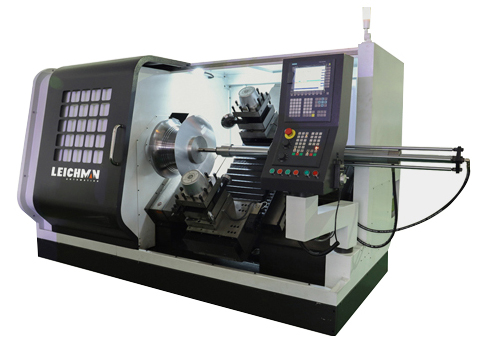Опубликован в 03. 09, 2021
CNC machining is a common term used in manufacturing and industrial applications, but what exactly is CNC? What is a CNC machine?
The term CNC stands for "Computer Numerical Control" and CNC machining is defined as a subtractive manufacturing process that uses computer control and machine tools to remove layers of material from stock parts (called blanks or workpieces) and produce custom-designed parts. The process is suitable for a wide range of materials including metals, plastics, wood, glass, foam and composites and is used in a variety of industries such as large CNC machining and CNC machining of aerospace parts. Please note that there is a difference between the definition of CNC machining and the definition of a CNC machine tool - one is a process and the other is a machine. a CNC machine tool is a programmable machine tool, capable of performing CNC machining operations autonomously.

CNC machining is a manufacturing process used in a variety of industries including automotive, aerospace, construction and agriculture and is capable of producing a wide range of products such as automotive frames, surgical equipment, aircraft engines, gears and hand and garden tooling. The process includes several different computer controlled machining operations including mechanical, chemical, electrical and thermal processes which remove the necessary materials from the workpiece to produce a custom designed part or product. While the chemical, electrical and thermal processes will be covered in later sections, this section will look at some of the most common mechanical CNC machining operations, including
Drilling
Milling
Turning
Drilling is a process that uses a multi-point drill to produce a cylindrical hole in a workpiece. In CNC drilling, the CNC machine normally feeds a rotating drill bit perpendicular to the plane of the workpiece surface, which produces vertically aligned holes that are equal in diameter to the diameter of the drill bit used for the drilling operation. However, it is also possible to perform angled drilling operations by using special machine configurations and workpiece fixtures. The operational capabilities of the drilling process include countersunk holes, countersunk holes, reaming and tapping.
Milling is a machining process that uses a rotating multi-point cutting tool to remove material from a workpiece. In CNC milling, the CNC metal spinning machine usually feeds the workpiece to the cutting tool in the same direction as the cutting tool rotation, whereas in manual milling, the machine feeds the workpiece in the opposite direction to the cutting tool rotation. The operational capabilities of the milling process include face milling (cutting shallow, flat surfaces and flat-bottomed cavities into the workpiece) and peripheral milling (cutting deep cavities (such as grooves and threads) into the workpiece).
Turning is a mechanical process that uses a single point cutting tool to remove material from a rotating workpiece. In CNC turning, the machine (usually a CNC lathe machine) feeds the cutting tool in a linear motion along the surface of the rotating workpiece, removing material from the circumference until the desired diameter is reached, resulting in the production of cylindrical parts with internal and external features such as slots, tapers and threads. The operational capabilities of the turning process include boring, facing, grooving and thread cutting.
Предыдущий: What Are Frame Drums Made of?
Следующий: What Is Metal Spinning?